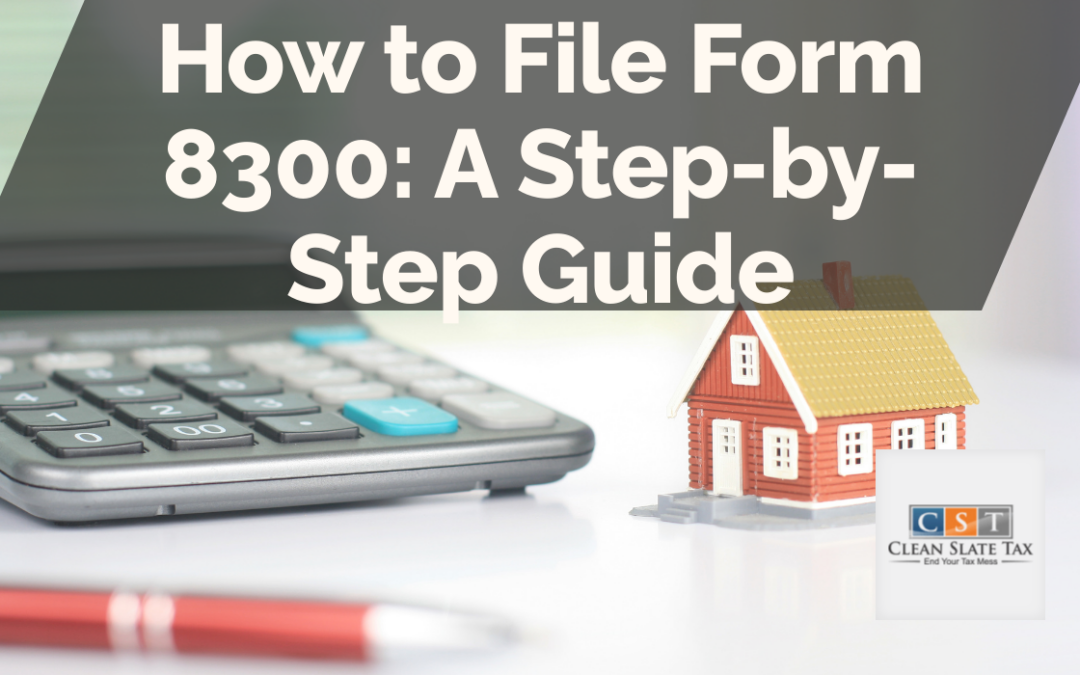Filing Form 8300 is a critical requirement for businesses that receive large cash payments in their operations. As a business owner, you must comply with the IRS regulations to avoid penalties and legal trouble. In this article, we will take you through the step-by-step guide on how to file Form 8300.
What is Form 8300?
Form 8300 is a document that businesses use to report cash payments received in excess of $10,000 from a single transaction or two or more related transactions. The form is required to be filed with the IRS and FinCEN (Financial Crimes Enforcement Network) within 15 days of receiving the payment.
Who needs to file Form 8300?
Businesses operating in various industries, such as real estate, automobile sales, jewelry sales, and legal consultancy, may fall into the category of “cash-heavy” businesses that need to file Form 8300. Any business that receives a cash payment of over $10,000 from a single transaction or a series of related transactions must report it to the IRS on Form-8300.
Step-by-Step Guide to Filing Form 8300
Step 1: Obtain Form 8300
Business owners can obtain Form 8300 either by downloading it directly from the IRS website or contacting the IRS directly to have the form mailed to their physical location.
Step 2: Fill out the necessary details
Form 8300 has several sections, and all relevant sections must be completed. Fill out the relevant details such as the name and identification (ID) number of the individual making the payment and the name and ID number of the recipient business.
Step 3: Provide Payment Details
Enter the amount of the cash received and the currency used for the payment. For transactions involving multiple payments, provide details of each payment separately.
Step 4: Sign the Declaration
After completing the necessary details, sign the declaration to verify the accuracy of the information. It is essential to retain a copy of the filled Form 8300 for your business records.
FAQs
What are the penalties for not filing Form 8300?
Businesses that fail to file Form 8300 as required are likely to face penalties. Penalties range from $25 for each failure to report the transaction correctly to the greater of $100,000 or 50% of the unreported cash received in the reported transactions. Criminal penalties, including imprisonment for up to 5 years, may also apply.
What if I don’t receive funds in excess of $10,000?
If the business doesn’t receive cash payments in excess of $10,000 in a single transaction or a related series of transactions, they are not required to fill out or file Form 8300.
Do I need to file Form 8300 for check or debit/credit card payments?
Form 8300 is only required for cash payments received. Check or debit/credit card transactions are not included in Form 8300 reporting requirements.
Can I file Form 8300 electronically?
Yes, businesses can file Form 8300 electronically through the FinCEN BSA E-Filing System.
Can I file Form 8300 late?
While it is best to file Form 8300 on time, the IRS may provide a reasonable cause exception for filing the form late. However, it is important to note that you may be subject to penalties if the IRS does not accept your reasonable cause explanation.
Conclusion
As a business owner, it is essential to stay compliant with the IRS regulations regarding cash payments. Filing Form 8300 is a simple process that can save your business from hefty penalties and legal trouble. By following these simple steps, you can ensure that your business remains on top of the IRS’ reporting requirements.





